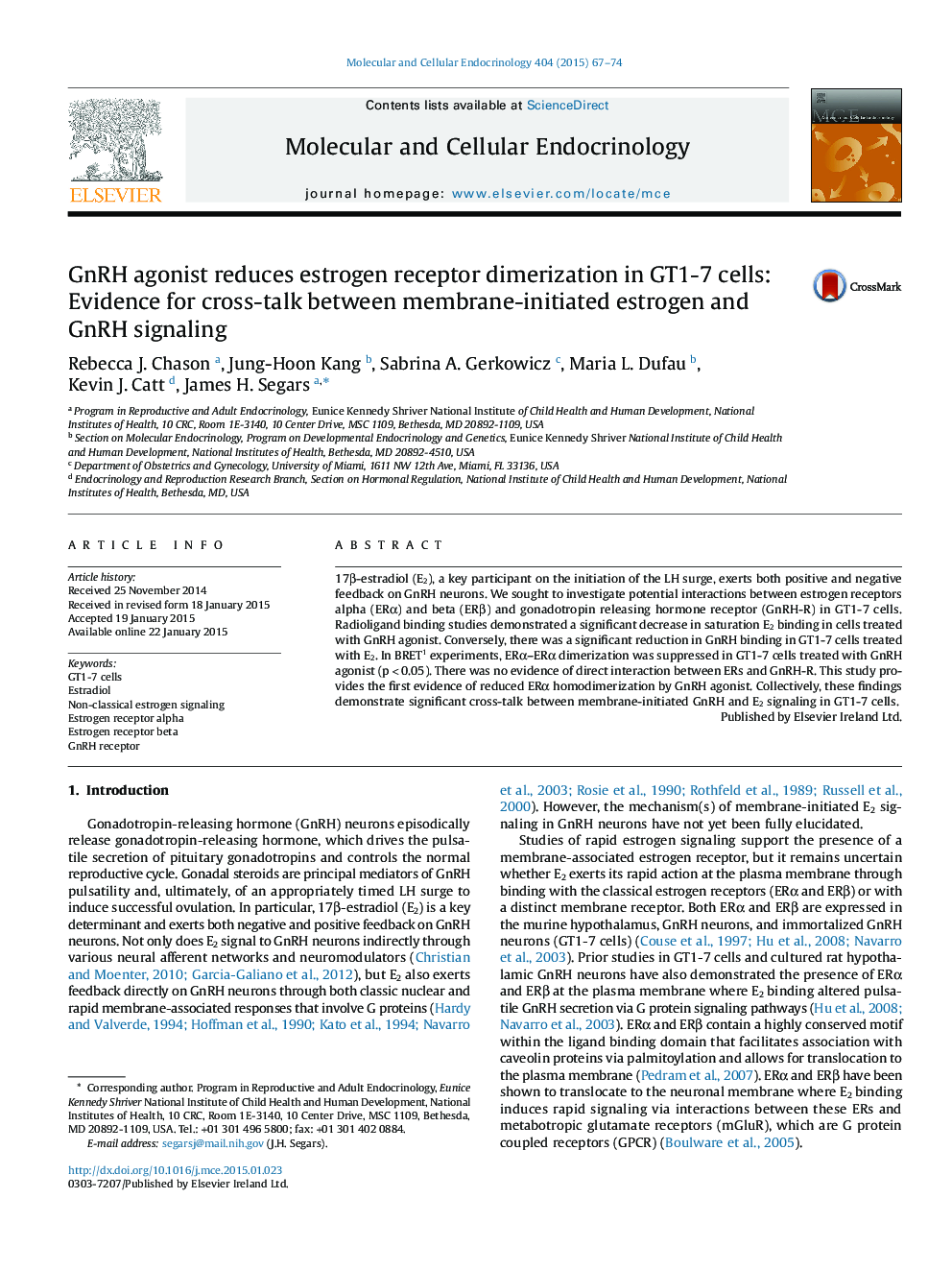| کد مقاله | کد نشریه | سال انتشار | مقاله انگلیسی | نسخه تمام متن |
|---|---|---|---|---|
| 2195886 | 1550874 | 2015 | 8 صفحه PDF | دانلود رایگان |

• GnRH binding saturation kinetics were suppressed by E2 in GT1-7 cell extracts.
• E2 binding sites and ERα homodimerization decreased following GnRH agonist treatment.
• Fusion constructs and BRET1 suggested no direct interaction between ERs and GnRH-R.
17β-estradiol (E2), a key participant on the initiation of the LH surge, exerts both positive and negative feedback on GnRH neurons. We sought to investigate potential interactions between estrogen receptors alpha (ERα) and beta (ERβ) and gonadotropin releasing hormone receptor (GnRH-R) in GT1-7 cells. Radioligand binding studies demonstrated a significant decrease in saturation E2 binding in cells treated with GnRH agonist. Conversely, there was a significant reduction in GnRH binding in GT1-7 cells treated with E2. In BRET1 experiments, ERα–ERα dimerization was suppressed in GT1-7 cells treated with GnRH agonist (p < 0.05). There was no evidence of direct interaction between ERs and GnRH-R. This study provides the first evidence of reduced ERα homodimerization by GnRH agonist. Collectively, these findings demonstrate significant cross-talk between membrane-initiated GnRH and E2 signaling in GT1-7 cells.
Journal: Molecular and Cellular Endocrinology - Volume 404, 15 March 2015, Pages 67–74